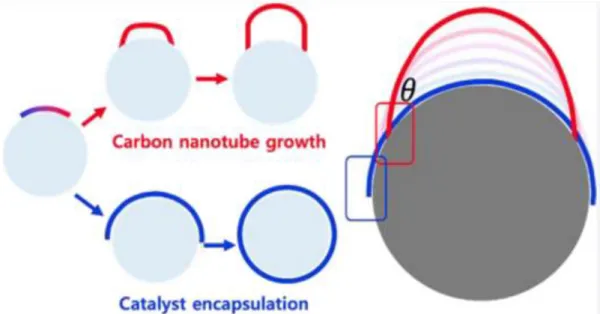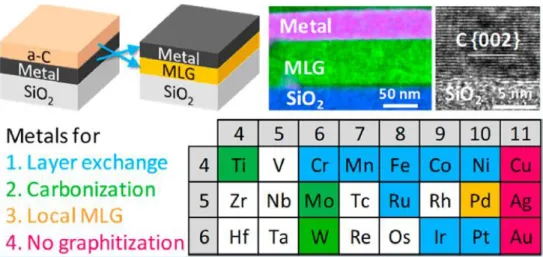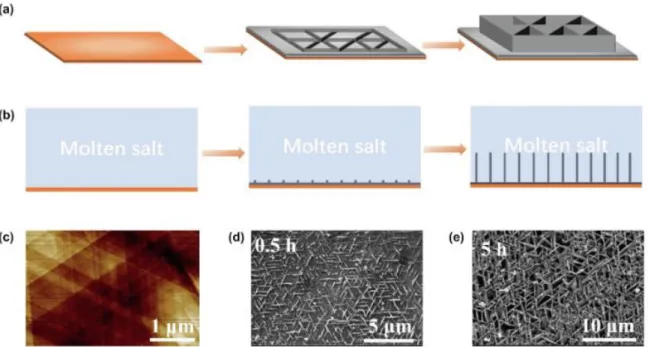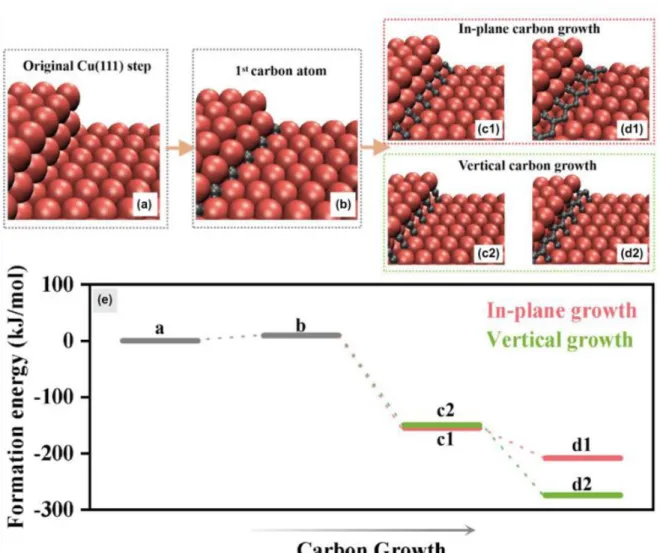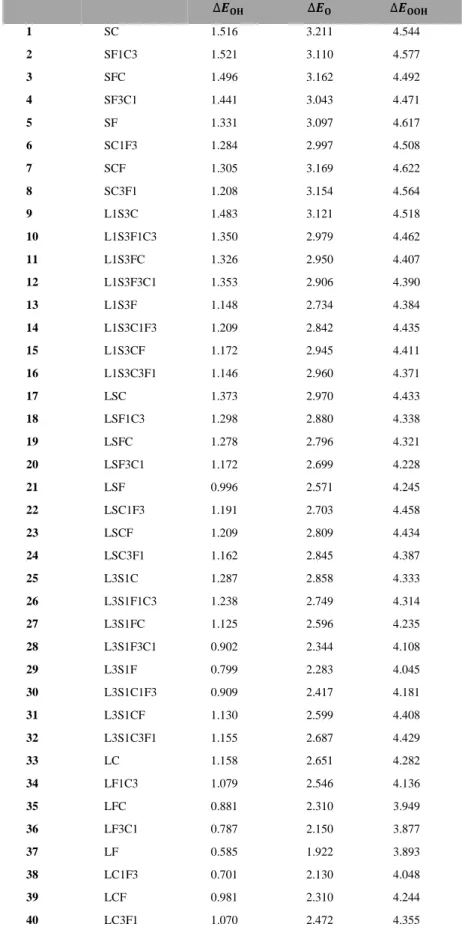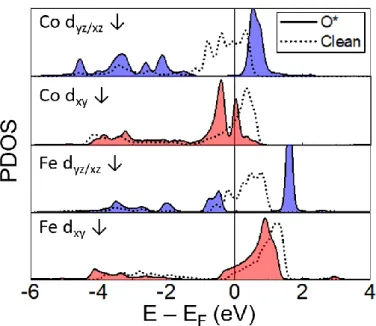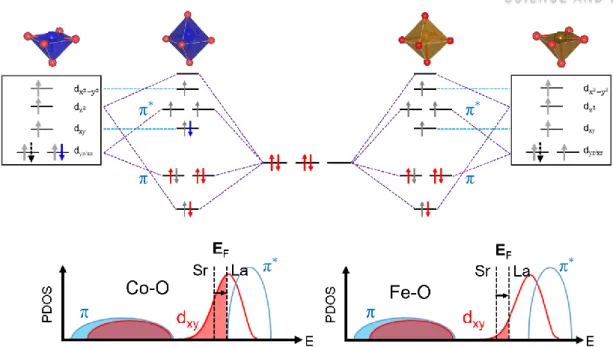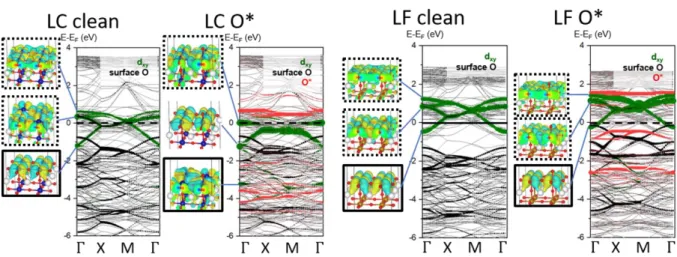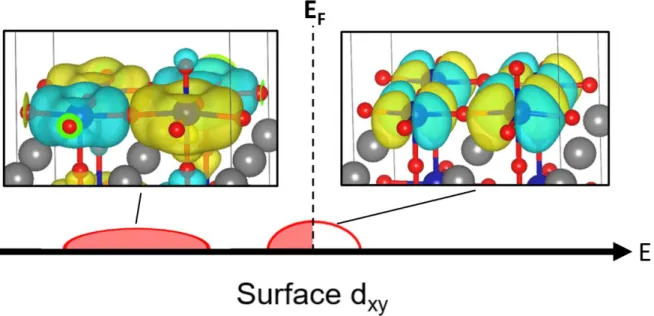Published by Elsevier Ltd.4 Figure 1.2 Annual evolution and percentage distribution of publications from 2000 to date. The color of the symbols indicates the type of active metal site (red = Fe and blue = Co). O atom on the surface of the metal because there are two non-equivalent semi-octahedral sites that the C atom occupied relative to the position of the O atom on the surface.
Introduction
- General Information
- Water Splitting for Hydrogen Production
- Carbon Control for Material Synthesis
- DFT simulations for OER Electrocatalysts
- Computational Standard Hydrogen Electrode
- Electrochemical Half-Reaction of Water Splitting, OER
- OER Electrolysis on Perovskite Oxide
- Carbon Control via Metal Surface
- Carbon Diffusion
- Growth of Carbon
- Outline of Dissertation
- References
Based on the AEM schematic described in Figure 1.?, the binding energies of OER intermediates were investigated. The configuration of the Ni−diamond sample and the direction of C diffusion are shown schematically in Figure 3.1b.

Theoretical Investigation for Rational Design of the OER Elecatalysts
Introduction
However, improving the efficiency and stability of earth-abundant electrocatalysts for large-scale hydrogen production is required. Among those candidate electrocatalysts, perovskite oxides (ABO3) have attracted much attention as they can be easily synthesized with various compositions and crystal structures1-3, and have good OER performance. For example, by mixing Sr with LaCoO3, the space group change from rhombohedral (R-3c) to cubic (Pm-3m) 9,10 is observed, the spin state change can be accompanied 8,10-12 and the OER performance can improved life 9,11.
To create an efficient and robust electrocatalyst, it is necessary to clearly understand what influences the intrinsic catalytic activity and stability of perovskite oxides during electrolysis. Because the stability of lattice oxygen is believed to be related to the performance of OER, the O 2p center level has been proposed as OER descriptor 11,14-16. Also, the O 2p level implies the degree of hybridization between 3d orbitals of the B atom and lattice oxygen 2p orbitals, which is related to the bond strength of OER intermediates at the active site.
Attempts have also been made to theoretically describe OER performance using an approach to calculate Gibbs free energy and crystal structural information. Gibbs free energy is difficult to study in experiments and operando environments, and the crystal structure is also affected by various factors, so it has a disadvantage to use as a descriptor.
Methods
- Calculation Information
- Explicit Solvent and Minima Hopping Methods
Although LOM is highly advantageous, due to the participation of lattice oxygen it suffers from surface amorphization, leading to partial deactivation of the electrocatalyst4,11,16,27. Focusing on AEM could be meaningful because according to the report by Kim et al. follows catalysts known to follow LOM, AEM (pH independence) near neutral pH (~7)28. Various studies have indicated that the solvation effect plays an important role in the OER interspecies stability29-36.
The solvent effect had a difference energy of 0.1 eV according to A mixing in the HOO* intermediate and was almost independent of the B metal species. Since the solvent effect was mainly reflected by the hydrogen bonding to the intermediates, the bond strength was not significantly affected. To get the explicit solvent initial positions, structure optimization was done by minima hopping37, and the most stable structure in each OER intermediate was taken as the initial position.
The explicit initial positions of the water molecule were given by the global optimization of the atomic simulation environment (ASE). In our results, we applied the solvation energy of LaxSr1-xBO3 as a function of x, as shown in equation (2.5). Unit: eV) Copyright © 2022 American Chemical Society.
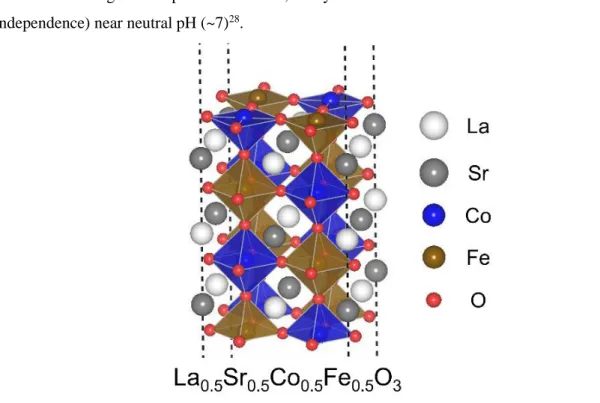
Results and Discussion
- OER Mechanism and Intermediates Binding Strength
- Correlation of Surface Electronic Structure and Surface Stability
- Descriptor (E 2p – 0.4 E dxy )
- OER activity and Electrocatalyst Design
In Figure 2.5, for clarity, only the minority spins dyz/xz or dxy are plotted, because they mainly contribute to the states near the Fermi level. For pure LaBO3, indicated by the dashed curves in Figure 2.5, more dyz/xz states are occupied for Co than Fe. Moreover, the binding energy difference between Co and Fe active sites, which cannot be explained solely by the O 2p center (Figure 2.4), is related to the dxy.
As shown in Figure 2.9, how many electrons will be occupied in dxy determines the surface stability and binding strength of the intermediate species. According to ABO3 bulk calculations, the O* and HO* binding energies are well described by the O 2p band center and the t2g minority spin band center of the B-metal (Figure 2.12a). In addition, the new common descriptor (E2p − 0.4 Et2g) provides guidance for OER overvoltage as shown in Figure 2.12b.
As indicated by the solid or dashed lines in Figure 2.12b, the overpotential is positively correlated with the bulk descriptor value. For the Co active site, AFC (blue lower triangle in Figure 2.12a) exhibits greater ΔEOH variation with the A-site mixing than AC (blue open circle), resulting in the suppressed reduction of the overpotential by the B-site mixing. For the Fe active site, the intermediate bond is relatively strong; thus AF has a higher overpotential than ACF, as shown in Figure 2.15.
Based on the picture in Figure 2.19, the OER electrocatalyst can be designed and guided in the desired direction, which is close to the optimal point.
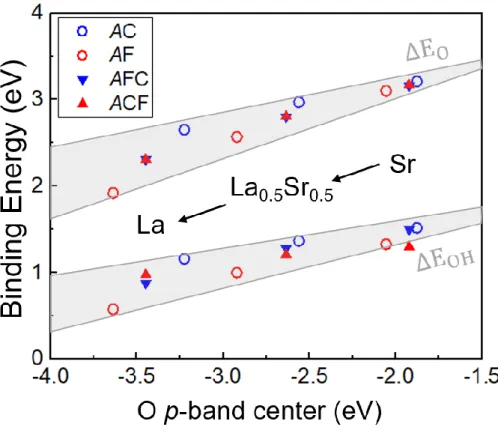
Conclusion
For example, occupation as an effective descriptor for the catalytic activity of perovskite oxide-based peroxidase mimetics. Adsorption trends for water, hydroxyl, oxygen and hydrogen at metal and platinum-skin transition surfaces. Density functional studies of graphitic materials functionalized with late transition metals for oxygen reduction reactions.
Mechanism of the oxygen reduction reaction on Pt(111) in alkaline solution: the importance of surface chemisorbed water. A new type of scaling relations to assess the accuracy of computational predictions of catalytic activities applied to the oxygen evolution reaction. Skipping minima: an efficient method of finding the global minimum of the potential energy surface of complex molecular systems.
Estimation of Hybridization of Transition Metal and Oxygen States in Perovskites from o k -Edge X-Ray Absorption Spectroscopy. Enhancing electrocatalytic activity of perovskite oxides by tuning cation deficiency for oxygen reduction and evolution reactions.
DFT Simulation for the Interface Carbon Diffusion
- Introduction
- Methods
- Results and Discussion
- Experimental Findings
- Theoretical Modeling of Reaction Pathways and Potential Energy Barriers
- Surface Exchange Mechanism
- Conclusion
- References
In contrast, when water vapor is present (see details in the Methods section of the original paper) in a silica tube reaction chamber during heat treatment at 1009 ± 1 °C for 30 min under a flow of 1000 sccm Ar(g) at 760 ± 1 Torr total pressure, an oxide layer formed on the exposed metal surface and continuous dissolution of diamond at the metal/diamond interface was observed, as shown in Figure 3.1d. Raman (Figure 3.1d) and SEM (Figure 3.1f) analyzes show that no graphitic film was formed on the exposed metal surface, and this is because water vapor could continuously remove C. The process of diamond dissolution in Ni or Co films in the presence of water vapor involves three primary steps: (i) C–C bond breaking followed by diffusion of C atoms into Ni or Co films at the metal/diamond interface, (ii) C diffusion through the 500 nm thick metal film, and (iii) reaction of C atoms with a thin layer of metal oxide on the metal surface to form CO(g), as shown schematically in Figure 3.2f.
As carbon movement develops, the potential energy curves of the diffusion of carbon atoms at the Ni(100) or Co(100)/D(100) interface through the octahedral sites are shown in Figure 3.3c. To illustrate the activation barrier, the potential energy curves for the diffusion of carbon atoms at the Ni(110) or Co(110)/D(110) interface are shown in Figure 3.3d. The calculated path is the same as that calculated in Figure 3.5a, which has a lower energy barrier in steps (1) and (2) compared to the energy barrier for steps (1) and (2) in Figure 3.5b.
The calculated activation barriers for carbon diffusion in bulk Ni (153 kJ/mol) or Co (175 kJ/mol) (Figure 3.10) are much lower than the rate-limiting activation enthalpies of the surface (regime I) and the interface (regime I). II) processes; these calculated values are in good agreement with the reported experimental values of 137 kJ/mol (873−1673 K) for Ni and 154 kJ/mol (976−1673 K) for Co.30,31 Because the metal bulk diffusion barrier is smaller than the enthalpy variation observed in the experiment, the carbon diffusion process in the Ni or Co metal does not determine the reaction rate. If the activation energy of the reverse interface solution reaction is less than that of bulk diffusion, this indicates that it is normal for carbon to return to the diamond surface, as described in Figure 3.12a. In Figure 3.10 the carbon diffusion barrier in Ni is 153 kJ/mol, but at the Ni(001)/D(001) interface the barrier is significantly lowered using the diamond vacancy site of diffuse carbon.
As the Ni atom, indicated by the red circle in Figure 3.12b, moves toward the diamond vacancy site, it creates space and facilitates carbon bulk diffusion.
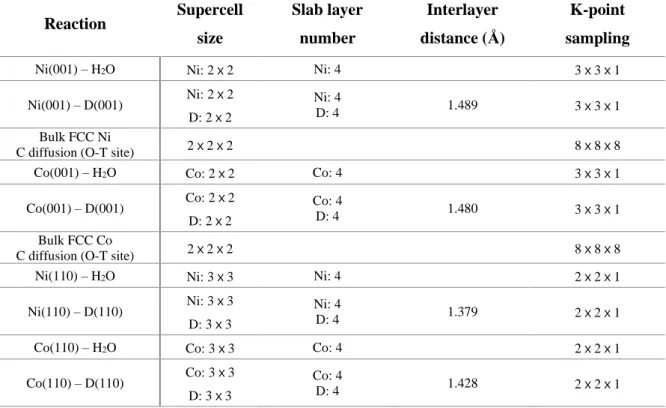
Summary
박사 과정 동안 받은 모든 도움과 지원에 감사드립니다. 먼저, 박사과정 전반에 걸쳐 저를 이끌어주시고 올바른 연구 방향으로 인도해 주신 지도교수 이근식 교수님께 감사의 말씀을 전하고 싶습니다. 지도교수님의 지도와 도움으로 저는 연구를 하면서 중요한 것들을 배웠고 연구의 즐거움과 의미를 깨닫게 되었습니다.
이근식 교수님의 적극적인 지도와 열정 덕분에 어려운 연구과정을 성공적으로 마칠 수 있었습니다. 선생님의 가르침을 바탕으로 평생학자가 되도록 노력하겠습니다. 그리고 Ruoff 교수님, 민승규 교수님, 김명종 교수님에게도 감사의 말씀을 전하고 싶습니다.
마지막으로, 제가 자라서 학업을 이어가며 박사학위를 취득할 때까지 많은 지지와 도움을 주신 제가 너무나 사랑하는 김환수 부모님, 최미병 부모님께 진심으로 감사드립니다. 제가 박사과정을 밟는 동안 아낌없는 격려와 지지를 보내주신 사랑하는 형, 여동생 김용선, 김화원님께 감사의 말씀을 전하고 싶습니다.
